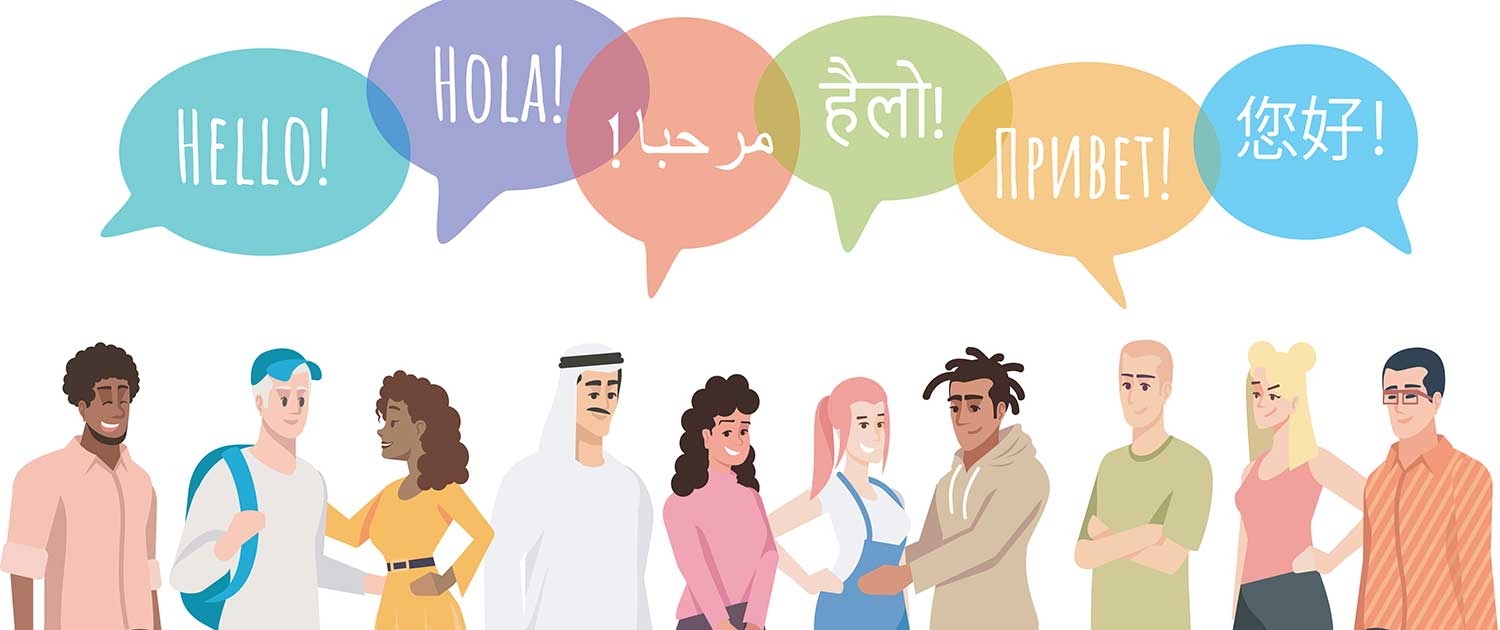Five Questions & Answers About Interpreting
You may be wondering, what does it take to be an interpreter, and who does this kind of work? Though much of this information applies to translators as well as interpreters, we’ll use the term interpreter throughout the post to include both, except where otherwise noted.
Who are interpreters?
In general, an interpreter is thought of as someone with a high-level of proficiency in English and at least one other language. This allows them to be the “bridge” between those who speak one language, but not the other. However, you may be surprised to learn that this is not always the case.
Of course many interpreters have a high level of skill with a foreign language because they were born in a foreign nation and later learned expert proficiency in English. Many are children of immigrants, who grew up in a bilingual environment. And others are Americans who have developed a fascination with another language and made a career of it. Some interpreters have attained certification for medical or legal interpreting, some have studied specialized courses for interpreting or translation at university, and some seem to have a natural ability.
But many working interpreters came to this field because of need. These interpreters may have very little training in interpreting. Their educational backgrounds may range from a high school diploma to a PhD. Their English proficiency may vary as well. Some have native like fluency, and others became an interpreter regardless of their proficiency, simply because they spoke the most English compared to others in their community.
No matter what their background is, all interpreters have the same expectations, and maybe that’s unrealistic.
What qualifications are needed to be an interpreter?
We’ve already mentioned the single most important qualification: Proficiency in two languages. However, depending on how and where they work, interpreters must often meet other requirements.
Interpreters who work in specialized settings will often need additional certifications and training for their particular environment. For example, interpreters working in courts will often be certified by the National Center for State Courts through their own state court.. Similar certifications and additional training exist in medical, educational and other specialized environments, but not for all languages. I
Who employs them?
You’ll find interpreters working everywhere from elementary schools to courtrooms to research hospitals, and almost anywhere in between. Some work directly for a government, university, or private company; others work for language companies that provide interpreting and translation services. A growing number of interpreters are self-employed, working from a home or private office. This last group may work a very variable schedule, while other interpreters tend to have a full time job during regular business hours.
What is a typical working day like for an interpreter?
Because so many different situations demand interpretation, there isn’t really a typical working day the way there might be for a construction worker or airline pilot. An interpreter may work a standard 40 hour week assisting diplomats at the United Nations, while an Arabic interpreter might find herself on a video call to an emergency room at 2am, explaining test results to the parents of a sick child.
Schedules are not the only thing that may differ radically. Interpreters go where they’re needed, and may serve a variety of clients. For example, one American Sign Language interpreter described a 27 hour period which began at 7am as she drove to a large local business to interpret a presentation in a business staff meeting. She then:
● Interpreted for a deaf man in psychiatric care
● Provided sign interpretation for a college lecture
● Went to the gym, returned home, slept
● Was awakened by a page at 11pm
● Reported to the hospital to help admit a deaf patient, leaving at 4:30am
● Slept some more, then arrived back at the college at 9:30 to interpret another lecture
How has COVID-19 affected interpreters?
In-person interpretation is the best practice, but providing this service now carries a significant risk. Telephone interpretation and video remote interpreting (VRI) have become the norm and will remain so until the crisis passes. VRI is especially valuable at this time because it allows the interpreter to read and convey expressions that would be hidden by a mask or other PPE.
The COVID crisis has also affected the way interpreters and translators who normally work in an office carry out their duties. Like so many other office workers, they have had to adapt their work to their home, and their home to their work!
Fortunately, with the right equipment, interpreters are able to use video and their special professional skills to provide a language bridge to people who need it, anywhere in America at any hour of the day.

